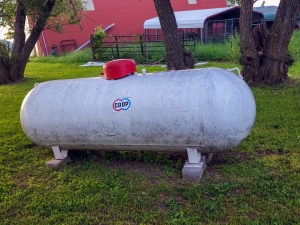Hedging 101 – Part Four: Another Example
The last post of our Hedging 101 series (Part 3) built on the hedging terms we defined to create an actual “hedging” example. With that example we were able to introduce three new terms: short, long, and prebuy.
Introducing New Terms
In this post we want to introduce some additional terms and run through another important example. Our previous post introduced our hypothetical hedging company – Twin Feathers Distributors or TFD. TFD’s objective was to achieve a $1.00/gallon margin and that was accomplished with the purchase of fixed price product (prebuy) in their region.
Defining Two New Major Tools
TFD has individual items that make up their total cost. That is exactly the same process for a prebuy. Whether it is in propane or other energy markets, fixed price products within a region are usually put together with two different major tools:
- Hub Product – This usually refers to the one or two main traded hubs for a particular energy product. Examples include Henry Hub for natural gas, Cushing for WTI (West Texas Intermediate) Oil, and of course Mont Belvieu or Conway for propane.
- Basis – This refers to the difference between a region and the major hub from which that product comes or is related to. An example includes Waha West Texas basis versus the Henry Hub location for natural gas or Selkirk, New York, versus Mont Belvieu for propane. A basis number can be either a positive or negative number.
Background on Our Hypothetical Company
Before diving into our next example, we need to provide a little more information about our hypothetical company. TFD operates in the great state of Michigan and usually purchases most of their product from the eastern side of the state at either the St. Clair or Marysville terminals. Each of these terminals receives propane at a price that is related to Mont Belvieu.
Another Hedging Example
With that additional data, we can now create our next “hedging” example:
- TFD sells 1,000 gallons of a future propane delivery to a customer at a price of $2.00 per gallon.
- TFD desires a margin of $1.00 per gallon on this sale.
- The current propane supply market in the TFD region would allow for the purchase of propane at either the St. Clair or Marysville terminal at the daily Mont Belvieu average price plus $.10/gallon. The $.10/gallon would be called the basis for that region.
- Daily Mont Belvieu is considered a Hub Product. This Hub Product price comes from the average of the high/low average in the financial markets that is reported by the OPIS service. For this example, that daily price will be $.83/gallon.
Here is how the math will work.
| Sale to Customer: | $2.00 per gallon |
| Cost: | |
| Daily Mont Belvieu Avg: | ($.83) per gallon |
| Regional Basis Price: | ($.10) per gallon |
| Transportation to TFD Facility: | ($.05) per gallon |
| Total Cost: | ($.98) per gallon |
| Margin to TFD: | $1.02 per gallon |
Results of Using Hedging Tools
For this second example, TFD was able to expand their margin by an additional $.02/gallon by using different instruments. Both examples – the first using the prebuy and the second using the Hub Product and Basis tool – act as a hedge to provide TFD the desired margin.
Which one is best? That is a situation-by-situation decision and can vary by region. Watch for later posts in this series as we continue to explore the different facets of hedging and how they can benefit fuel distributors.
Hedging 101 – Part Four: Another Example
By JD Buss






